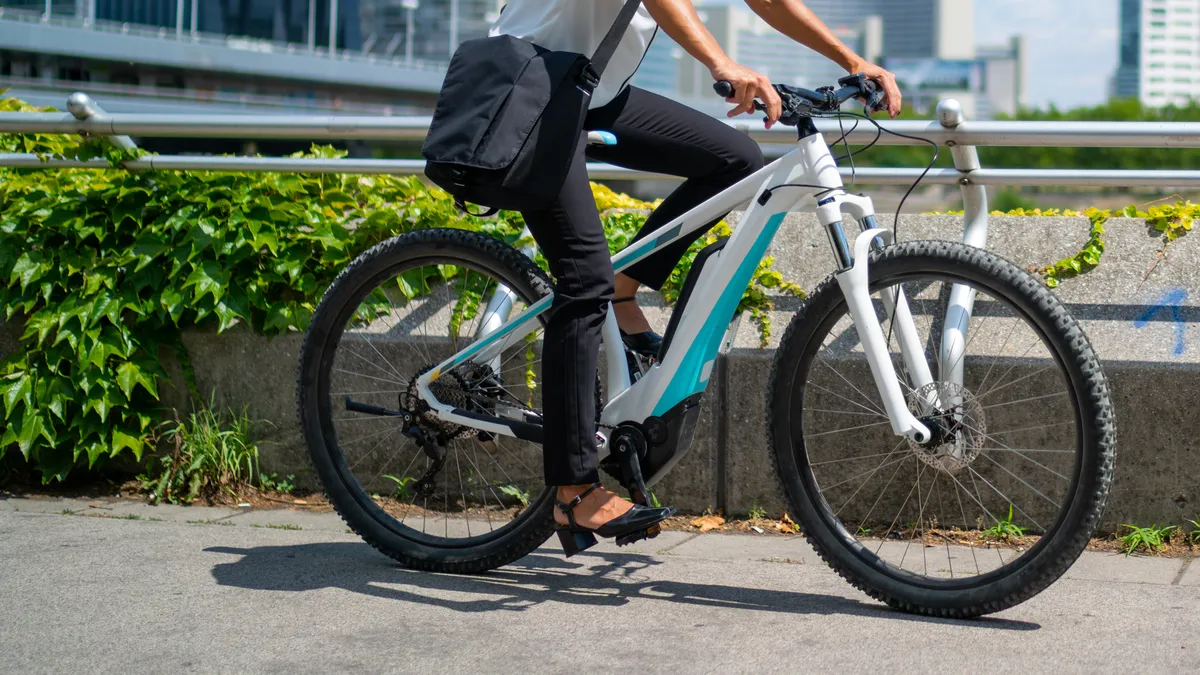Dive Brief:
- Fire departments and safety officials are warning that consumers and dealers need to take precautions with electric bikes and scooters after an increase in battery fires linked to micromobility devices.
- As of Nov. 1, the New York City Fire Department (FDNY) has reported 78 fires linked to e-bikes this year, causing 72 injuries and three deaths, according to department data shared with Smart Cities Dive. That fire total is on pace to double the 44 e-bike-related fires last year.
- The lithium-ion batteries that power e-bikes can overheat and catch fire under certain conditions, especially if they are not charged or disposed of properly. Experts say the risk is most common with older or used bikes, but even some shared scooter and bike fleets have seen battery fires. On the disposal front, last week bicycle advocacy and industry organization PeopleForBikes and battery recycling collection program Call2Recycle announced the launch of what it describes as the "first industrywide electric bicycle battery recycling program in the United States."
Dive Insight:
While cycling boomed during the pandemic, e-bikes represented the biggest area of growth. A report by market research group NPD found that e-bike sales grew by 240% over the past year, now making the vehicles the third-largest cycling sales category, an even larger category than road bikes. The report found that riders have been drawn to the ease and enjoyment of powered bikes, especially as the availability of e-bikes on city streets has also made consumers more familiar and comfortable with them.
Another potential catalyst for e-bike adoption is a specific e-bike tax credit included in the current Build Back Better bill being debated by Democrats in Congress.
However, the lightweight lithium-ion batteries that allow riders to power up hills and commute without too much of a workout harbor some risk. The batteries — similar to the technology that powers cell phones, laptops and other lightweight electronics — carry a significant amount of energy for their weight, which also means there is a danger of the energy being released out of control due to an equipment failure or accident. “The reality is the chances of a fire are minimal, but the effects can be dangerous,” said Mike Fritz, chief technology officer with the micromobility consulting firm Human Powered Solutions.
Fritz was involved in the 1990s on an effort with EV Global Motors to build one of the first e-bikes for sale and more recently worked with Pedego Electric Bikes. He said that the battery has always been a challenge for the industry, since it needs to be light enough to not weigh down the bike, but energy-dense enough to deliver sufficient power. While lithium-ion batteries carry some risks, he said, there are “common-sense rules” to follow that can minimize the danger.
A 2020 report from the Consumer Product Safety Commission (CPSC), which identified an overall 41 fatalities and 132,800 emergency room visits related to micromobility products between 2017 and 2019, found a handful of fire issues with e-scooters, bikes and hoverboards. Of the 97 fires identified in that time span, 93 were related to hoverboards. Incomplete data released by the CPSC in September reported 71 fatalities for the three-year period ending in 2020, but did not identify battery fires or other causes.
In 2019, Lyft suspended its fleet of e-bikes after two batteries caught fire (the e-bike were returned to streets and deemed safe about five months later). Previously, Lime in 2018 recalled some scooters over a fire risk.
This year, Austin Fire Department officials said a September fire at a hotel was linked to an e-scooter battery being charged. The London Fire Brigade in July issued a warning over what they called a “spike in ferocious fires” linked to micromobility vehicles.
In an October press conference, FDNY Commissioner Daniel Nigro said the fires were a “very serious problem that keeps increasing.”
“We’ve not had that problem with phones or other devices. The problem has started with the proliferation of battery-operated bikes,” Nigro said.
Fritz has worked with bike dealers and fire officials on a safe charging and storage guide, including recommendations such as not letting vehicles charge unattended and not storing many of them to charge overnight in one place. That may present a challenge for some fleets, he said, but is necessary while manufacturers work on safer alternatives.
“Gasoline is much more energy dense than a battery … but technologically we have learned how to manage the risks associated,” Fritz said. “I am convinced that there will come a time in the not-so-distant future that this issue goes away entirely.”
Correction: We have replaced the photo with this story to avoid implying a connection to a bike provider the story does not name.












